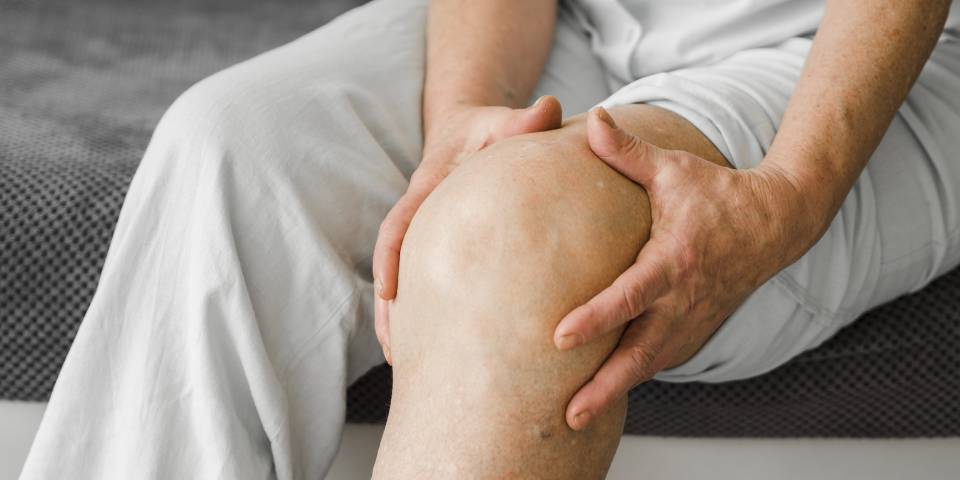- 01/06/2023
- by Dr. Ankur Kumar
- Latest Blog
Knee pain is a prevalent issue that affects individuals of all ages and lifestyles. Whether you’re an athlete, a fitness fanatic, or simply leading a busy life, knee pain can significantly affect your mobility and overall well-being. Understanding the common causes behind knee pain and exploring the available treatment choices is crucial for finding relief and getting back on your feet.
In this blog, the Best Orthopedic Doctor in PCMC, Pune Dr. Ankur Kumar provides a compressive guide of causes of knee pain and discusses effective treatment strategies to help you regain your knee health.
Causes of Knee Pain:
- Osteoarthritis: Osteoarthritis, often referred to as “wear and tear” arthritis, is a leading cause of knee pain, specifically in older adults. It occurs when the protecting cartilage in the knee joint slowly wears down, leading to joint stiffness, inflammation, and pain.
- Ligament Injuries: Ligament injuries, such as anterior cruciate ligament (ACL) tears or medial collateral ligament (MCL) sprains, are common among athletes and people who engage in high-impact activities. These injuries usually occur due to sudden twists, impacts, or awkward landings.
- Bursitis: Bursitis is the inflammation of the bursae, small fluid-filled sacs that cushion the bones, tendons, and muscles around the joints. When the bursae in the knee evolved inflamed, it can cause pain and swelling.
- Patellofemoral Pain Syndrome: Patellofemoral pain syndrome, also known as the runner’s knee, is indicated by pain in the front of the knee, close to the patella (kneecap). It often happens due to overuse, muscle imbalances, or misalignment of the patella.
- Meniscus Tears: The meniscus is a rubbery cartilage that serves as a shock absorber between the thigh bone (femur) and shin bone (tibia). Tears in the meniscus can happen from sudden twisting or bending motions, especially in sports or activities that involve riding.
- Obesity and Excess Weight: Carrying excess weight can place added stress on the knees, leading to pain and discomfort.
- Other Causes: Knee pain can also be caused by disorders like rheumatoid arthritis, gout, infections, and fractures Diagnosing the underlying cause is essential for choosing the most effective treatment approach. Consulting with a healthcare professional or an orthopedic specialist is crucial to receive an accurate diagnosis and develop a tailored treatment plan.
Treatment Options for Knee Pain:
Knee Pain Treatment in PCMC, Pune may vary depending on the underlying cause and severity of the condition. Here are some common treatment options for knee pain:
- Medications: Over-the-counter nonsteroidal anti-inflammatory drugs (NSAIDs), such as ibuprofen or naproxen, can help ease pain and inflammation associated with knee pain. However, it’s important to use these medicines as directed and consult a healthcare professional if the pain continues or worsens.
- Physical Therapy: Physical therapy plays a vital role in treating knee pain. A qualified physical therapist can design a customized exercise program to strengthen the muscles around the knee, enhance flexibility, and improve overall joint stability. Physical therapy may also include procedures such as ultrasound, electrical stimulation, or manual therapy to ease pain and promote healing.
- Rest and Activity Modification: Resting the knee and avoiding activities that exacerbate the pain is vital in promoting healing. Reducing or modifying high-impact activities and using supporting equipment like knee braces can assist protect the knee and prevent further injury.
- Weight Management: Maintaining a healthy weight is especially important for people with knee pain, as excess weight can put additional stress on the knee joint. Losing weight through a combination of healthy eating and routine exercise can significantly decrease knee pain and enhance overall joint health.
- Assistive Devices: Using assistive devices like crutches, canes, or walkers can assist take the weight off the knee joint and stimulate mobility while the knee heals. Orthotic shoe inserts or knee braces can also deliver support and stability.
- Injections: In addition to corticosteroid injections, other kinds of injections may be used to relieve knee pain. Hyaluronic acid injections, also known as viscosupplementation, can aid lubricate the knee joint and provide temporary relief for people with osteoarthritis.
- Surgery: In cases where conventional treatments fail to provide ease, surgery may be considered. There are different surgical options depending on the specific condition, including arthroscopy (minimally invasive procedure), partial or total knee replacement, or ligament repair/reconstruction for torn ligaments.
Conclusion:
Knee pain can significantly impact your quality of life, but with the right approach, it can be effectively managed. Identifying the underlying cause of knee pain is vital in choosing the appropriate treatment plan. Whether through conventional measures like physical therapy and lifestyle changes or more advanced interventions like surgery, the purpose is to relieve pain, improve function, and restore your mobility. If you’re experiencing persistent knee pain, it’s crucial to consult with Dr. Ankur Kumar, the Best Knee Replacement Surgeon in PCMC, Pune for an accurate diagnosis and personalized treatment options.



